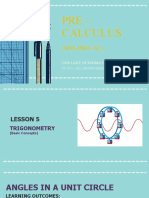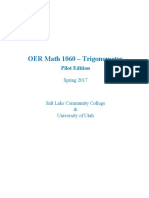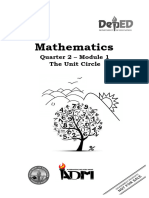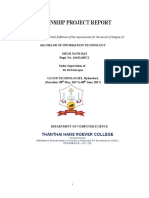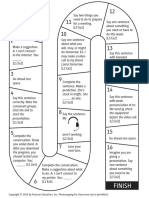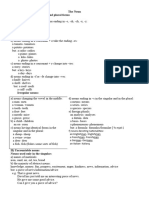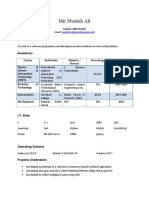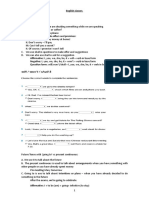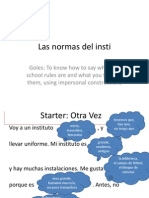0% found this document useful (0 votes)
32 views4 pagesCH 5.1 - Angles
The document discusses angles, including:
- How an angle is formed by a fixed initial side and rotating terminal side
- Standard position of an angle with the vertex at the origin and initial side on the positive x-axis
- Measuring angles in degrees by rotating the terminal side clockwise or counterclockwise
- Coterminal angles that have the same terminal side but can differ by multiples of 360 degrees
- Converting between degrees and radians by multiplying degrees by π/180 and radians by 180/π
- Reference angles for angles not in the first quadrant
- Converting between degrees, minutes, seconds and decimal degree formats
Uploaded by
MeesamCopyright
© © All Rights Reserved
We take content rights seriously. If you suspect this is your content, claim it here.
Available Formats
Download as PDF, TXT or read online on Scribd
0% found this document useful (0 votes)
32 views4 pagesCH 5.1 - Angles
The document discusses angles, including:
- How an angle is formed by a fixed initial side and rotating terminal side
- Standard position of an angle with the vertex at the origin and initial side on the positive x-axis
- Measuring angles in degrees by rotating the terminal side clockwise or counterclockwise
- Coterminal angles that have the same terminal side but can differ by multiples of 360 degrees
- Converting between degrees and radians by multiplying degrees by π/180 and radians by 180/π
- Reference angles for angles not in the first quadrant
- Converting between degrees, minutes, seconds and decimal degree formats
Uploaded by
MeesamCopyright
© © All Rights Reserved
We take content rights seriously. If you suspect this is your content, claim it here.
Available Formats
Download as PDF, TXT or read online on Scribd
/ 4





















